Decorex Reveals How to Focus Design Around People and the Planet
Decorex 2020 was about more than trends; the trade fair focused on how design can benefit both us and the environment
“We need to create environments where humans can thrive,” said Karen Haller, colour and design consultant, at this year’s Decorex virtual conference. It was a statement that summed up the focus of the annual interior design event, held from 17 to 19 November this year, and typically hosted in London, UK.
Trends took a back seat as experts from the design industry engaged in a range of discussions that looked into how we can create interiors that are good for the environment and for those who spend time in them.
Trends took a back seat as experts from the design industry engaged in a range of discussions that looked into how we can create interiors that are good for the environment and for those who spend time in them.
Be bold with biophilia
Something that came up in many of the event’s discussions was the importance of nature in our interiors. Design professionals highlighted the benefits of an outside view, or using natural materials when creating an interior scheme, for example.
During a talk entitled Back to Nature is the Future, the panel was asked whether adding plants and painting a wall green are enough to bring a natural connection to a home. Colour and design consultant Haller responded, “If you’re living in a high-rise, perhaps the only way is to bring in lots of plants, but as designers we can do more”.
She recommends designers look into the subject of biophilia by reading the book of the same name by Edward O Wilson, which explains more about the symbiotic connection humans have with nature. “When we live in harmony with nature, we really do thrive,” said Haller.
Nicola Keenan of Boxx Creative also highlighted the benefits of biomimicry. This is where designers solve a human challenge by learning from and mimicking the strategies found in nature. In a recent restaurant project, for example, Keenan’s firm used a shell as the starting point, realising the lines on its surface were an effective way of dividing the space. “There’s so much you can benefit and glean from nature,” she said.
Something that came up in many of the event’s discussions was the importance of nature in our interiors. Design professionals highlighted the benefits of an outside view, or using natural materials when creating an interior scheme, for example.
During a talk entitled Back to Nature is the Future, the panel was asked whether adding plants and painting a wall green are enough to bring a natural connection to a home. Colour and design consultant Haller responded, “If you’re living in a high-rise, perhaps the only way is to bring in lots of plants, but as designers we can do more”.
She recommends designers look into the subject of biophilia by reading the book of the same name by Edward O Wilson, which explains more about the symbiotic connection humans have with nature. “When we live in harmony with nature, we really do thrive,” said Haller.
Nicola Keenan of Boxx Creative also highlighted the benefits of biomimicry. This is where designers solve a human challenge by learning from and mimicking the strategies found in nature. In a recent restaurant project, for example, Keenan’s firm used a shell as the starting point, realising the lines on its surface were an effective way of dividing the space. “There’s so much you can benefit and glean from nature,” she said.
Bring in fresh air
Indoor air quality was a theme that was touched on a few times during the event. “The World Heath Organization has defined air pollution as the number one environmental health risk,” said Philip Dowds of OKTOair, who was part of the Designing for True Wellbeing at Home panel. “Particulate matter, which are very fine particles, can, along with other pollutants, make their way into our lungs. As it’s invisible, we as a human race have kind of ignored it.”
He followed this somewhat alarming information with more positive news about the development of air-purifying technology. The system his firm manufactures, for instance, uses artificial intelligence to measure the pollutants and particulate matter in each room and then purifies and disinfects the air.
Gunter added that people who are becoming more aware of the air quality in their home are making savings elsewhere in their project to allocate more to their family’s health.
She gave the example of a house she kitted out with a mechanical heat recovery and ventilation system. “It’s a really big difference when I step into that house versus stepping into another,” she says. “The air quality is far superior and you feel alert for longer.”
Indoor air quality was a theme that was touched on a few times during the event. “The World Heath Organization has defined air pollution as the number one environmental health risk,” said Philip Dowds of OKTOair, who was part of the Designing for True Wellbeing at Home panel. “Particulate matter, which are very fine particles, can, along with other pollutants, make their way into our lungs. As it’s invisible, we as a human race have kind of ignored it.”
He followed this somewhat alarming information with more positive news about the development of air-purifying technology. The system his firm manufactures, for instance, uses artificial intelligence to measure the pollutants and particulate matter in each room and then purifies and disinfects the air.
Gunter added that people who are becoming more aware of the air quality in their home are making savings elsewhere in their project to allocate more to their family’s health.
She gave the example of a house she kitted out with a mechanical heat recovery and ventilation system. “It’s a really big difference when I step into that house versus stepping into another,” she says. “The air quality is far superior and you feel alert for longer.”
Need a pro for your interior design project?
Let Houzz find the best pros for you
Let Houzz find the best pros for you
Cut out the chemicals
As well as purifying the air, the panellists stressed the importance of choosing products that don’t pollute the air in the first place. Keenan talked about ‘off-gassing’ during a discussion on Sustainable Sourcing for Interior Designers.
“When you’re looking at a material, depending on how it’s been treated – from stain-resistant treatments to fire retardants – it off-gasses,” she explained. “These are invisible [and odourless], so people don’t know. [With] fresh paint, there’s often a smell – that’s VOC – but you can be sitting on something upholstered with foam in it and you don’t realise the chemicals that are in the air. Now everything is double and triple glazed – sealed – and people don’t have windows open in the winter, all these gases stay in.”
She advises designers and homeowners to look out for products with a natural fire retardant.
Sean Sutcliffe of Benchmark Furniture also brought up the challenge of finding alternatives to fire-retardant chemicals in a talk titled Design With Purpose. “We no longer use plastic foam, we only use coir, latex and wool,” he said, “all of which are sustainably sourced and don’t require any fire retardants.”
As well as purifying the air, the panellists stressed the importance of choosing products that don’t pollute the air in the first place. Keenan talked about ‘off-gassing’ during a discussion on Sustainable Sourcing for Interior Designers.
“When you’re looking at a material, depending on how it’s been treated – from stain-resistant treatments to fire retardants – it off-gasses,” she explained. “These are invisible [and odourless], so people don’t know. [With] fresh paint, there’s often a smell – that’s VOC – but you can be sitting on something upholstered with foam in it and you don’t realise the chemicals that are in the air. Now everything is double and triple glazed – sealed – and people don’t have windows open in the winter, all these gases stay in.”
She advises designers and homeowners to look out for products with a natural fire retardant.
Sean Sutcliffe of Benchmark Furniture also brought up the challenge of finding alternatives to fire-retardant chemicals in a talk titled Design With Purpose. “We no longer use plastic foam, we only use coir, latex and wool,” he said, “all of which are sustainably sourced and don’t require any fire retardants.”
Design for life
Another key topic at the event was longevity, particularly when it comes to designing a sustainable home. “To make sure it’s sustainable, one of the things we always come back to when installing [a product or material] is, is it suitable for purpose? Have you met the brief?” asked Keenan. “If you haven’t done those things, it’s not actually sustainable, because it’s going to end up being replaced.”
Susie Rumbold of Tessuto Interiors emphasised the responsibility of designers to make sure pieces can easily be maintained and disassembled to ensure they last for a long time.
“I think this comes back to having a designer involved in the early stages to help plan out all these things,” said Chloe Bullock of Materialise, who also highlighted the value of reusing and repurposing existing products.
“I try to encourage clients to slow down a bit and look around to check we’re not getting rid of something that would work with the scheme,” she said.
Browse more beautiful living spaces on Houzz
Another key topic at the event was longevity, particularly when it comes to designing a sustainable home. “To make sure it’s sustainable, one of the things we always come back to when installing [a product or material] is, is it suitable for purpose? Have you met the brief?” asked Keenan. “If you haven’t done those things, it’s not actually sustainable, because it’s going to end up being replaced.”
Susie Rumbold of Tessuto Interiors emphasised the responsibility of designers to make sure pieces can easily be maintained and disassembled to ensure they last for a long time.
“I think this comes back to having a designer involved in the early stages to help plan out all these things,” said Chloe Bullock of Materialise, who also highlighted the value of reusing and repurposing existing products.
“I try to encourage clients to slow down a bit and look around to check we’re not getting rid of something that would work with the scheme,” she said.
Browse more beautiful living spaces on Houzz
Find value in waste
If we do more to increase the longevity of products and materials, we shouldn’t need to throw so much away. In the meantime, however, there are still plenty of things that end up in landfill. Some of the Decorex speakers focused on how we can make more of these discarded products and materials.
“I’ve just written a book about things made from waste and I feature 30 makers, all of whom are using things that would have ended up in landfill as their primary material,” said Katie Treggiden during the Design With Purpose discussion. “What’s interesting is that many of the makers said, I don’t think we should call it waste anymore – it’s not waste, it’s a resource. Increasingly, the things we need are in landfill rather than in the ground.”
Sutcliffe added to this by citing his brother, who previously worked in mining. “He used to say to me, ‘Today’s landfill [sites] are the mines of the future’,” he told the panel, and explained how sorting technology can help this process, as well as the initial design of the products that end up in landfill.
Treggiden gave the example of a tagging system that can be put into materials at the design stage, so people can easily identify the particular material, disassemble the product, and reuse it later on.
If we do more to increase the longevity of products and materials, we shouldn’t need to throw so much away. In the meantime, however, there are still plenty of things that end up in landfill. Some of the Decorex speakers focused on how we can make more of these discarded products and materials.
“I’ve just written a book about things made from waste and I feature 30 makers, all of whom are using things that would have ended up in landfill as their primary material,” said Katie Treggiden during the Design With Purpose discussion. “What’s interesting is that many of the makers said, I don’t think we should call it waste anymore – it’s not waste, it’s a resource. Increasingly, the things we need are in landfill rather than in the ground.”
Sutcliffe added to this by citing his brother, who previously worked in mining. “He used to say to me, ‘Today’s landfill [sites] are the mines of the future’,” he told the panel, and explained how sorting technology can help this process, as well as the initial design of the products that end up in landfill.
Treggiden gave the example of a tagging system that can be put into materials at the design stage, so people can easily identify the particular material, disassemble the product, and reuse it later on.
Source wisely
When it comes to specifying products and materials, the panellists’ advice was to do your homework. Stefan Dodds of Dodds & Shute explained at the Sustainable Sourcing for Interior Designers discussion how he always asks his suppliers whether they know where the product came from, whether they make it themselves or, if they outsource it, how much control they have over that process. “It’s so important to understand the people who are making the product,” he said. “Are they looked after?”
Certification is often the first port of call when checking a product’s sustainability, but this also requires some research, according to the panel.
“There’s a plethora of labels out there. They’re a very good starting point as a guide, but, for us, having a conversation with a supplier is very valuable,” said Keenan. “It’s only when you speak to them that you can really drill down and understand. Also, discussing whether someone is not quite there but has plans for the future is something I’m hugely supportive of.”
Your turn
Do you agree with these discussion points about creating a healthy, sustainable home? Share your thoughts in the Comments, like this story, save the images, and join the conversation.
More
Are you up-to-date on the latest in global trade fairs? Catch up here with 10 Standout Products From ICFF’s 2020 Virtual Trade Show
When it comes to specifying products and materials, the panellists’ advice was to do your homework. Stefan Dodds of Dodds & Shute explained at the Sustainable Sourcing for Interior Designers discussion how he always asks his suppliers whether they know where the product came from, whether they make it themselves or, if they outsource it, how much control they have over that process. “It’s so important to understand the people who are making the product,” he said. “Are they looked after?”
Certification is often the first port of call when checking a product’s sustainability, but this also requires some research, according to the panel.
“There’s a plethora of labels out there. They’re a very good starting point as a guide, but, for us, having a conversation with a supplier is very valuable,” said Keenan. “It’s only when you speak to them that you can really drill down and understand. Also, discussing whether someone is not quite there but has plans for the future is something I’m hugely supportive of.”
Your turn
Do you agree with these discussion points about creating a healthy, sustainable home? Share your thoughts in the Comments, like this story, save the images, and join the conversation.
More
Are you up-to-date on the latest in global trade fairs? Catch up here with 10 Standout Products From ICFF’s 2020 Virtual Trade Show

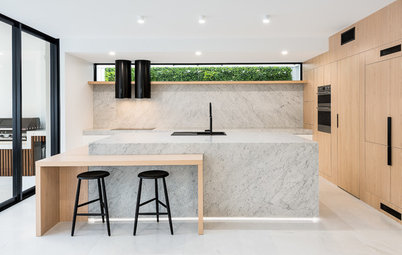
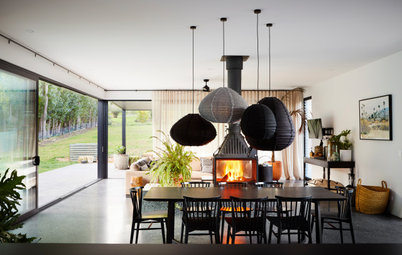
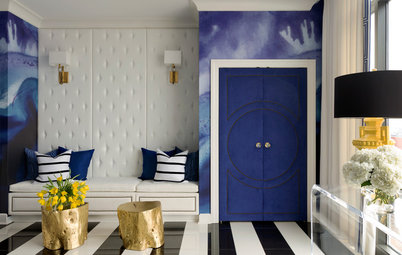
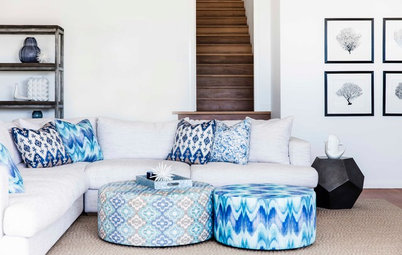
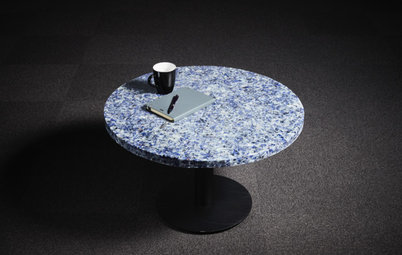
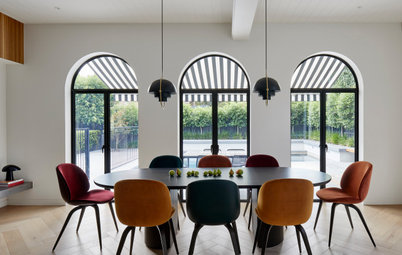

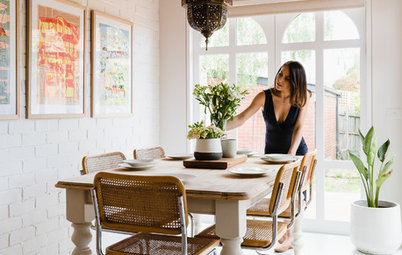
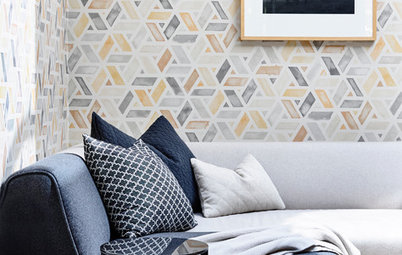
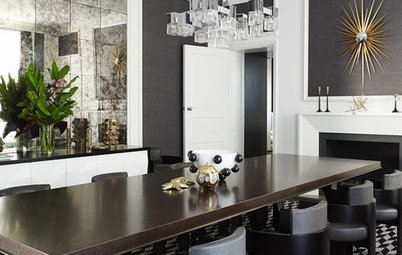
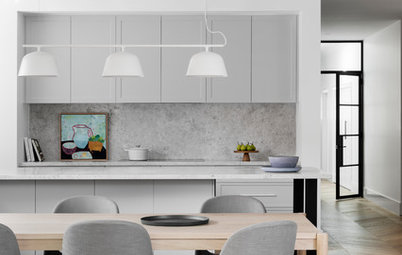
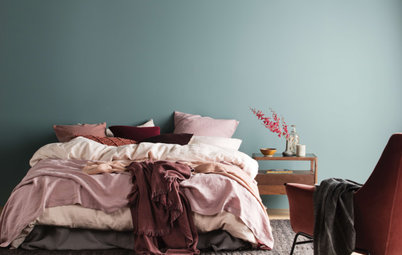

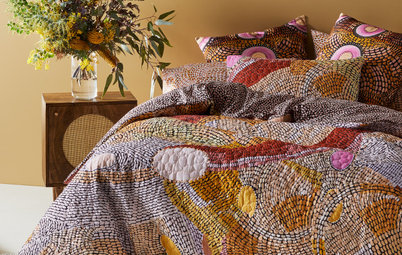
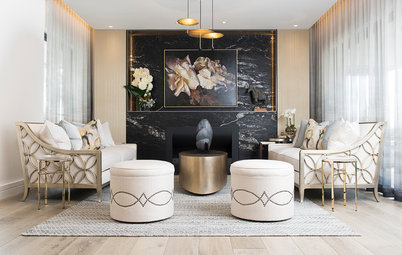


“What is it that makes up that slightly nebulous, hard-to-pin-down home feeling?” asked Arabella Youens, a property journalist on the panel during Decorex’s Designing for True Wellbeing at Home discussion.
The panellists talked about how to design a home for health and happiness, rather than just aesthetics, highlighting the importance of scent, sound and air quality, as well as how the residents use the space.
“I usually concentrate on how a space makes someone feel, focusing on the senses, from the stylistic elements your eyes focus on as you enter the space to the textures you touch, as well as the elements that make up the acoustics,” said interior designer Irene Gunter of Gunter & Co Interiors.
“At the beginning of each project, we spend a lot of time getting to know the clients, from the first thing they do when they come home to the last thing they do when they go to bed,” she continued. “We try to discover what they find invigorating, what they find relaxing – what makes them tick. Do they long for a clutter-free environment [in which] to unwind after a hectic day or do they really enjoy seeing lots of cheerful colours and personal artefacts to boost their mood?”
Gunter uses this information to build a picture of a space that works for that particular client and ensures they focus on this rather than becoming too distracted by other images. “It’s easy to get carried away by an amazing picture of a space and forget how you want to feel,” she says.
Thinking of renovating? Find an interior designer on Houzz near you